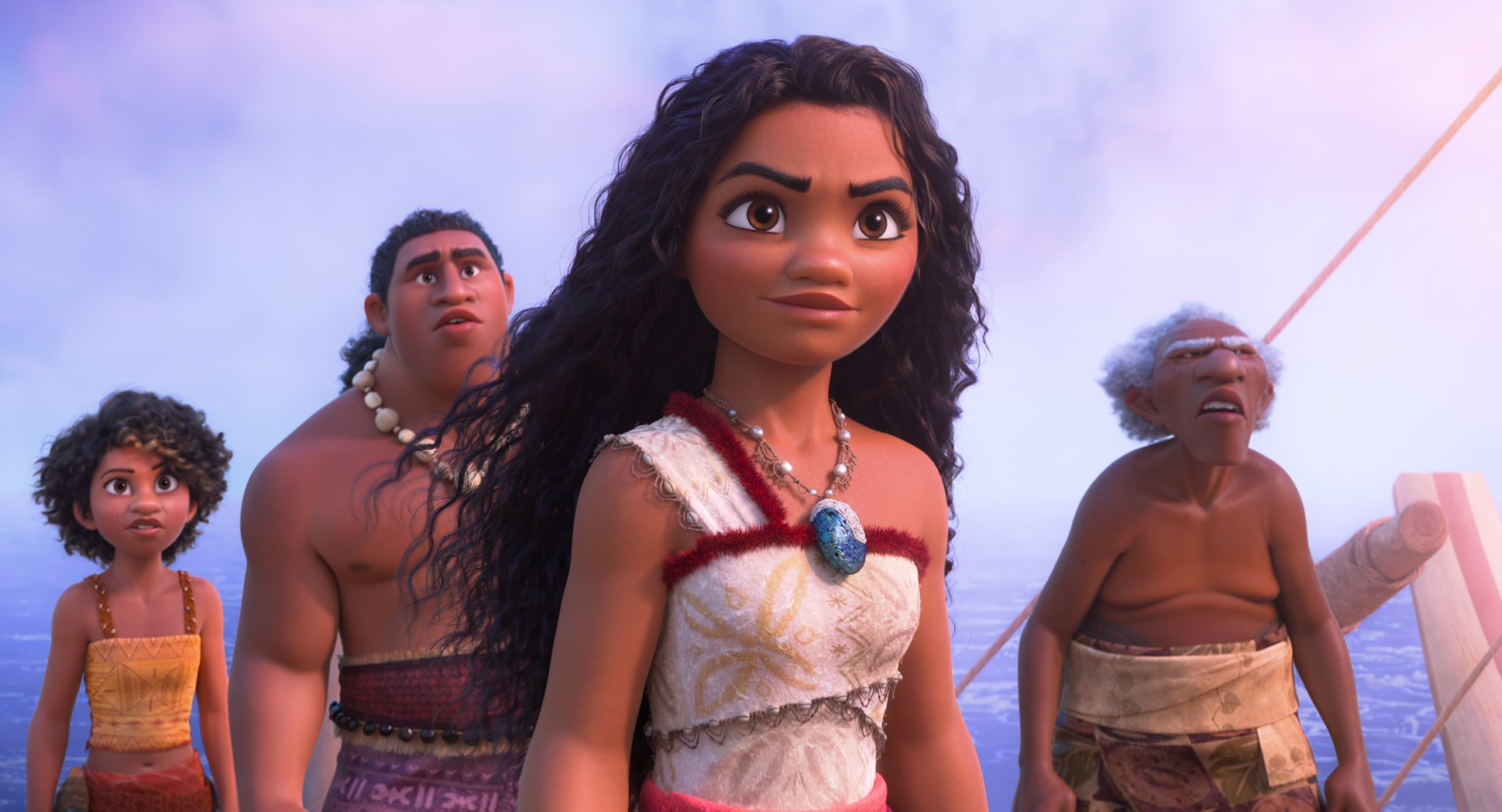Moana 2 – Film Review
Published November 27, 2024

When Moana sailed into theaters in 2016, it captured hearts with its lush animation, vibrant Polynesian culture, and a powerful message about self-discovery. The announcement of a sequel, Moana 2, promised another epic adventure for the titular heroine, this time delving deeper into her bond with the ocean and her legacy as a wayfinder. Directed by newcomers David Derrick Jr., Jason Hand, and Dana Ledoux Miller, the film attempts to recapture the magic of its predecessor while charting a new course. Unfortunately, Moana 2 struggles to rise to the occasion, delivering an uneven experience that leaves viewers longing for the original’s charm.
As expected of a Walt Disney Animation Studios production, the animation in Moana 2 is breathtaking. The ocean sequences are rendered with stunning detail, and the film continues to celebrate Polynesian art and culture through its design. The mystical island of Motufetu, though underutilized, is beautifully imagined, with glowing coral reefs and bioluminescent flora adding to its allure. Character animation is fluid, with the returning cast seamlessly integrated alongside new characters. However, while visually impressive, the sequel lacks the groundbreaking innovation that made the first film feel so fresh.
The central premise of Moana 2—a quest to restore balance between the ocean and mortals—has potential, but the execution feels lackluster. The narrative is overstuffed with subplots and characters, leading to pacing issues and a lack of emotional depth. Moana’s new crew, including the spirited craftswoman Loto and the reluctant elder Keke, adds some humor and camaraderie, but their development is minimal, leaving them feeling like archetypes rather than fully realized individuals. The decision to split Maui’s storyline from Moana’s for much of the film diminishes the dynamic chemistry that was a highlight of the original.
The introduction of the villain, Nalo, the storm god, is underwhelming. Despite his menacing design and thunderous presence, his motivations are poorly fleshed out, and his role feels more like a plot device than a compelling antagonist. Matangi, Nalo’s enforcer, has moments of complexity, but her arc is rushed and fails to leave a lasting impact.
One of the standout elements of Moana was its unforgettable soundtrack, blending traditional Polynesian music with contemporary Broadway flair. While the music retains a Polynesian influence, none of the songs reach the iconic status of “How Far I’ll Go” or “You’re Welcome.” The tracks feel serviceable but lack the emotional resonance and narrative drive that made the first film’s music so memorable. Maui’s new solo number, in particular, feels like a pale imitation of his original showstopper.
Moana’s character remains the heart of the film, and Auliʻi Cravalho once again delivers a stellar vocal performance. Moana’s journey as a leader and wayfinder is compelling, but it doesn’t break new ground. Her moments of doubt and resilience are touching, but they feel like retreads of themes already explored in the original. Maui, voiced by Dwayne Johnson, is sidelined for much of the story, and his character arc lacks the depth and humor that made him such a standout in the first film.
The new additions to the cast are a mixed bag. Moni, the enthusiastic Maui fanboy, is awfully annoying and one-dimensional. Loto, voiced by Rose Matafeo, has a spark of individuality as a resourceful craftswoman, but her potential is undercut by limited screen time. Keke, the grumpy farmer, adds some wisdom and dry humor, but his character arc feels predictable. The film’s attempt to balance the ensemble cast results in Moana’s personal journey feeling diluted.
The themes of Moana 2—preserving cultural heritage, the interconnectedness of people and nature, and the resilience of the human spirit—are worthy but lack the nuanced storytelling of the original. The film often opts for exposition-heavy dialogue rather than allowing these ideas to emerge organically. The emotional stakes, while present, don’t hit as hard, partly because of the scattered focus and rushed pacing. Moments that should feel triumphant or heart-wrenching come across as hollow, failing to evoke the same level of audience investment.
The humor in Moana 2 feels more forced compared to its predecessor. While Heihei, the dimwitted rooster, continues to provide laughs, much of the comedy relies on slapstick and one-liners that don’t always land. The tonal shifts between lighthearted adventure and darker, more serious moments are jarring, making it difficult for the film to establish a cohesive identity. This uneven tone detracts from the immersive quality that defined the original.
The returning cast members deliver strong performances, with Cravalho and Johnson bringing charisma and heart to their roles. Temuera Morrison, Nicole Scherzinger, and Rachel House reprise their roles with warmth, grounding the film in familiarity. Among the new voices, Rose Matafeo stands out as Loto, bringing energy and wit to her character. However, the overall ensemble feels underutilized, with many characters relegated to the background.
Moana 2 is a visually stunning sequel that fails to live up to the high bar set by its predecessor. While it retains the cultural richness and adventurous spirit of the original, its scattered narrative, underdeveloped characters, and lackluster music prevent it from achieving the same level of magic. Fans of Moana may find moments to enjoy, but the film ultimately feels like a missed opportunity to expand on the legacy of one of Disney’s most beloved modern classics.
Though Moana 2 has its moments of charm and beauty, it struggles to chart a course that feels as fresh and impactful as the first film. It’s a sequel that, like the storm god Nalo, seems lost at sea.
